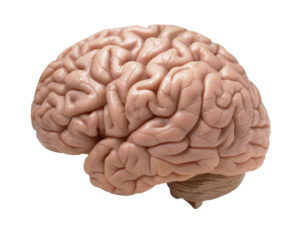 An Epstein Barr virus infection is so common that about 95% of us have had it at some point in life, usually childhood. Sometimes it leads to mononucleosis. New research strengthens the case that the Epstein Barr virus (EBV) also plays a part in the development of multiple sclerosis (MS).
An Epstein Barr virus infection is so common that about 95% of us have had it at some point in life, usually childhood. Sometimes it leads to mononucleosis. New research strengthens the case that the Epstein Barr virus (EBV) also plays a part in the development of multiple sclerosis (MS).
The study found that getting an EBV infection (mononucleosis) in early adulthood acts as a trigger for later development of multiple sclerosis - about 10 years later. MS usually develops between the ages of 20 to 40 in adulthood. The results are so compelling because the Harvard Univ. researchers looked at data from 10 million young adults on active duty in the US military. They found that risk of MS increased 32-fold after infection with EBV, but not other viruses.
Multiple sclerosis is a neurological disease in which the immune system attacks the brain and spinal cord, stripping away protective insulation (myelin) around the nerve cells. The Epstein Barr virus is a herpes virus that attacks a type of immune cell called B cells. After the initial EBV infection the virus remains dormant in a person's cells for the rest of the person's life. A number of studies have found EBV-infected B cells in the brains and demyelinated lesions of MS patients.
The hope now is to develop an EBV vaccine or stop the virus with antiviral drugs targeting EBV, and that this could ultimately prevent or cure MS. Keep in mind that EBV is considered a multifactorial disease by many, with several factors increasing the risk - such as having certain genes, not getting enough vitamin D, and also an Epstein Barr virus infection
From Science Daily: Epstein-Barr virus may be leading cause of multiple sclerosis
Multiple sclerosis (MS), a progressive disease that affects 2.8 million people worldwide and for which there is no definitive cure, is likely caused by infection with the Epstein-Barr virus (EBV), according to a study led by Harvard T.H. Chan School of Public Health researchers.
"The hypothesis that EBV causes MS has been investigated by our group and others for several years, but this is the first study providing compelling evidence of causality," said Alberto Ascherio, professor of epidemiology and nutrition at Harvard Chan School and senior author of the study. "This is a big step because it suggests that most MS cases could be prevented by stopping EBV infection, and that targeting EBV could lead to the discovery of a cure for MS."
MS is a chronic inflammatory disease of the central nervous system that attacks the myelin sheaths protecting neurons in the brain and spinal cord. Its cause is not known, yet one of the top suspects is EBV, a herpes virus that can cause infectious mononucleosis and establishes a latent, lifelong infection of the host. Establishing a causal relationship between the virus and the disease has been difficult because EBV infects approximately 95% of adults, MS is a relatively rare disease, and the onset of MS symptoms begins about ten years after EBV infection. To determine the connection between EBV and MS, the researchers conducted a study among more than 10 million young adults on active duty in the U.S. military and identified 955 who were diagnosed with MS during their period of service.
The team analyzed serum samples taken biennially by the military and determined the soldiers' EBV status at time of first sample and the relationship between EBV infection and MS onset during the period of active duty. In this cohort, the risk of MS increased 32-fold after infection with EBV but was unchanged after infection with other viruses. Serum levels of neurofilament light chain, a biomarker of the nerve degeneration typical in MS, increased only after EBV infection. The findings cannot be explained by any known risk factor for MS and suggest EBV as the leading cause of MS.
Ascherio says that the delay between EBV infection and the onset of MS may be partially due the disease's symptoms being undetected during the earliest stages and partially due to the evolving relationship between EBV and the host's immune system, which is repeatedly stimulated whenever latent virus reactivates.
